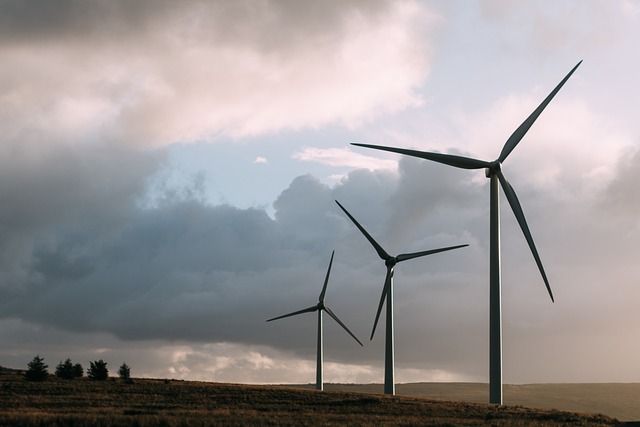Wind Energy
Wind Energy Formula |
||
|
\( E \;=\; \frac{ 1 }{ 2 } \cdot A \cdot t \cdot \rho \cdot v^3 \) (Wind Energy) \( A \;=\; \dfrac{ 2 \cdot E }{ t \cdot \rho \cdot v^3 } \) \( t \;=\; \dfrac{ 2 \cdot E }{ A \cdot \rho \cdot v^3 } \) \( \rho \;=\; \dfrac{ 2 \cdot E }{ A \cdot t \cdot v^3 } \) \( v \;=\; \left( \dfrac{ 2 \cdot E }{ A \cdot t \cdot \rho } \right)^{ \frac{1}{3} } \) |
||
| Symbol | English | Metric |
| \( E \) = Wind Energy | \( lbf-ft \) | \( J \) |
| \( A \) = Rotary Area | \( ft^2 \) | \( m^2 \) |
| \( t \) = Time | \(sec\) | \(s\) |
| \( \rho \) (Greek symbol rho) = Density of Air | \(lbm\;/\;ft^3 \) | \(kg\;/\;m^3 \) |
| \( v \) = Wind Speed | \(ft\;/\;sec \) | \(m\;/\;s \) |
 Wind energy, abbreviated as E, is the kinetic energy generated from the movement of air masses in the Earth's atmosphere. It is harnessed and converted into usable electricity using devices called wind turbines or windmills. Wind energy is considered a renewable and sustainable source of power because it relies on the natural movement of air, which is driven by the sun's heat and the Earth's rotation.
Wind energy, abbreviated as E, is the kinetic energy generated from the movement of air masses in the Earth's atmosphere. It is harnessed and converted into usable electricity using devices called wind turbines or windmills. Wind energy is considered a renewable and sustainable source of power because it relies on the natural movement of air, which is driven by the sun's heat and the Earth's rotation.
Wind turbines consist of large blades mounted on a rotor that spins when the wind blows. The spinning rotor is connected to a generator that converts the mechanical energy of the rotating blades into electrical energy. This electricity can then be fed into the power grid or used to power specific applications.
While wind energy offers significant environmental and economic benefits, it also presents challenges that need to be carefully managed. As technology advances and energy storage solutions improve, many of the current disadvantages may be mitigated, making wind energy an even more attractive option for a sustainable future.
Key Components
Wind Turbines - These are the main devices used to capture wind energy. They consist of blades, a rotor, a nacelle (which houses the generator), and a tower.
Rotor Blades - These are designed to catch the wind and rotate. The rotation of the blades turns the rotor, which is connected to the generator.
Generator - This converts the rotational energy from the rotor into electrical energy.
Tower - The tower supports the rotor and generator, raising them to a height where the wind is stronger and more consistent.
Wind Energy System Types
Onshore Wind Farms - These are located on land where there is a steady wind flow.
Offshore Wind Farms - These are located in bodies of water, usually in the sea, where wind speeds are higher and more consistent.

